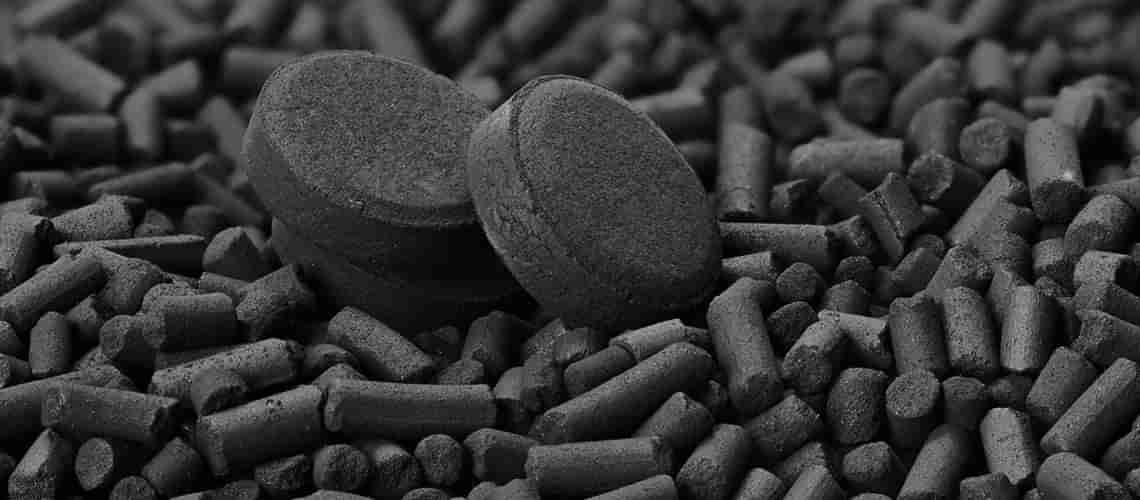- About
- Industries
- Products
- Wastewater Treatment
- Conventional Effluent Treatment: AQUASEP
- Toxic Refractory < 60,000 COD Removal: Catalytic Hydro-oxidation CHD-Ox
- Wet Air Oxidation for TOXIC > 60,000 COD : THERMOX
- Nanobubbles in Water Treatment: NANOPOREX-E
- Chemical-Free Cooling Tower Technology – A Sustainable Solution: ZEPHYR
- MVR for ZLD: Vapozem
- Membranes in wastewater Treatment: PROMEM
- TSS removal and Product recovery using Ceramics: PORESEP
- Heavy Metals and Trace Contaminant removal using Resins: SORBION
- Improving Efficiency of your sand bed filters: NANOMATRIX
- Choosing the Right technology for Wastewater treatment: Wastewater Treatability Studies’
- Reduce/Recover Oil from Wastewater: DISORB
- Produced Water Treatment: PWT
- Non Biofouling Membranes in wastewater Treatment: PROMEM-B
- Advanced Bioaugmentation Culture: BIOPORE
- Cavitation using Ultrasonics: RUSONICS-E
- Oxygen Generator System for Industries: OXYLIFE
- Process Solutions
- Precious Metal catalyst Filtration: CONTUFILT-M
- Activated Carbon Filtration: CONTUFILT-AC
- Raney Nickel Catalyst Filtration: CONTUFILT-RN
- Hot Gas Filtration: CONTUFILT – MH
- Biosolids removal using ceramics: PORESEP
- MVR for ZLD: VAPOZEM
- Ion Exchange-based RESINS: SORBION
- Dehydrating solvents by Zeolite Membranes: SOLVOSEP
- HiGee Continuous Distillation: ROTASEP
- Molecular Separation by Membranes: PROMEM
- Filtration & Separation
- Precious Metal catalyst Filtration: CONTUFILT – M
- Activated Carbon Filtration: CONTUFILT-AC
- Raney Nickel Catalyst Filtration: CONTUFILT-RN
- Hot Gas Filtration: CONTUFILT – MH
- Ceramic Dynamic Membrane Filtration: PORESEP
- MVR for ZLD: Vapozem
- Nano-Bubbles Improve Process Efficiency: NANOPOREX
- Alternate to Continuous Distillation / Rectification: ROTASEP
- Liquid-Liquid Extraction Mixer Settler: SEPARIX
- Ion Exchange-based RESINS: SORBION
- Pervaporation: Dehydrating Solvents and Separating Mixtures: SOLVOSEP
- Cartridges & Filter Bags: FLOWSEP™
- Molecular Separation by Membranes: Recovery and Isolation: PROMEM
- Colour / Organics / VOC Removal: CARBOSORB
- Oxygen Generator System for Industries: OXYLIFE
- RUSONIC – Sonochemistry
- Magnetic Separator Technology: MAG-Filt
- Wastewater Treatment
- Resource
- Contact Us
Top Posts
5 Applications of Nanobubbles in Agriculture
April 23, 2025
Agriculture | Nanoporex-E
How to Increase Yield Without Using Fertilisers?
April 18, 2025
Agriculture | Nanoporex-E
As nanotechnology continues to revolutionise various industries, one of the most debated topics in agriculture is the potential impact of nanobubbles on crops. Some concerns have been raised about the effects of nanobubbles on plant health, with misconceptions circulating about their potential harm.
In this article, we will debunk these myths and explain how nanobubbles, when used correctly, can offer significant benefits to crops, enhancing growth, improving nutrient uptake, and promoting sustainable farming practices. Let’s set the record straight.
What Are Nanobubbles?
Nanobubbles are extremely small gas bubbles, typically less than 200 nanometres in diameter. Despite their tiny size, nanobubbles have unique properties that make them highly effective for various applications, particularly in water treatment and agriculture.
Their stability allows them to remain suspended in water longer than regular bubbles, and their high surface area makes them efficient at dissolving gases, such as oxygen, into liquids.
When introduced into irrigation systems, nanobubbles increase dissolved oxygen levels, which supports plant growth and improves soil health. Far from being harmful, nanobubbles are an environmentally friendly and efficient tool for enhancing agricultural practices.
Myth 1: Nanobubbles are harmful to plants and crops
One common myth is that nanobubbles may damage crops or cause negative effects on plant health. This is a misconception. Nanobubbles themselves are not harmful to plants. In fact, they can significantly benefit plant growth. Nanobubbles increase the availability of dissolved oxygen in the soil, which is crucial for root health and the overall growth of plants. Oxygen is essential for aerobic respiration, the process by which plants convert nutrients into energy. With better oxygenation, roots can absorb nutrients more effectively, leading to stronger, healthier crops. Nanobubbles also promote better nutrient absorption, allowing plants to access the minerals they need to thrive.
Myth 2: Nanobubbles cause an imbalance in the soil ecosystem
Another myth is that the introduction of nanobubbles could disrupt the natural balance of the soil ecosystem. In reality, nanobubbles help create a more balanced environment by promoting the growth of beneficial microorganisms.
The increased oxygen levels in the soil encourage the growth of aerobic microbes, which are essential for breaking down organic matter and maintaining soil fertility. This improved microbial activity supports healthier soil, which in turn supports plant growth.
Nanobubbles also help control the growth of harmful anaerobic bacteria, further benefiting the soil ecosystem.
Myth 3: Nanobubbles are ineffective and do not provide lasting benefits
Some believe that nanobubbles are a temporary solution that does not have long-term effects on crop health. This is false. Nanobubbles have a lasting impact on plant growth and soil quality.
When introduced into irrigation systems, nanobubbles stay suspended in water for extended periods, continuously providing oxygen to plant roots. This sustained oxygenation improves the long-term health of plants, enhances nutrient uptake, and promotes better growth rates.
Over time, nanobubbles can lead to stronger, more resilient crops, reducing the need for chemical fertilisers and pesticides.
Myth 4: Nanobubbles are too costly for agricultural use
Cost is often a concern when considering new technologies, but the reality is that nanobubbles are a cost-effective solution for agriculture. Nanobubble generators, like Nanoporex, are designed to operate efficiently with low energy consumption.
The benefits of increased oxygenation and improved nutrient uptake lead to healthier crops, better yields, and reduced dependency on chemical inputs. This makes the use of nanobubbles an economically viable option for farmers looking to boost productivity while maintaining sustainable practices.
The long-term benefits far outweigh the initial investment, particularly when considering the potential for improved crop health and reduced environmental impact.
Myth 5: Nanobubbles have no impact on water quality or irrigation efficiency
Another misconception is that nanobubbles do not improve water quality or irrigation efficiency. In fact, nanobubbles significantly enhance both. By improving oxygen transfer and promoting microbial activity in the soil, nanobubbles help break down organic matter and reduce water consumption.
Plants that receive more oxygen can absorb water more efficiently, leading to better hydration and less water waste. Furthermore, nanobubbles help improve the quality of irrigation water by removing contaminants and improving oxygen levels, which supports plant growth and reduces the need for harmful chemical treatments.
The Truth: Nanobubbles Benefit Crops and Agriculture
When used properly, nanobubbles provide multiple advantages for agriculture. They improve dissolved oxygen levels in water and soil, promoting better root health and nutrient absorption. Nanobubbles enhance soil quality by encouraging beneficial microorganisms and reducing harmful bacteria.
They lead to healthier, more resilient crops with increased yields, all while reducing water consumption and the need for chemical fertilisers. Nanobubbles also help maintain water quality in irrigation systems, ensuring sustainable farming practices.
Conclusion
The myths surrounding nanobubbles and their impact on crops are unfounded. Nanobubbles are a valuable tool for farmers looking to improve crop health, increase yields, and promote sustainable agriculture.
Far from being harmful, nanobubbles enhance plant growth by providing oxygen to roots, improving nutrient uptake, and creating a balanced soil ecosystem. As technology continues to advance, nanobubbles will play an increasingly important role in modern agriculture, supporting both productivity and environmental stewardship.
Would you like to explore how NANOPOREX can benefit your farm?
Related Posts
LinkedIn Feed

Industries
Wastewater Treatment
Separation Sciences
Contact
Sign in for latest updates
Stay informed with the latest updates from Diva Envitec! Sign up for our newsletter to receive exclusive news, insights, and case studies directly to your inbox.
[mc4wp_form id=17477]

Copyright © 2024 Diva Envitec
Terms of Service
Privacy Policy
Industries
Wastewater Treatment
Separation Sciences
Contact
Sign in for latest updates
Stay informed with the latest updates from Diva Envitec! Sign up for our newsletter to receive exclusive news, insights, and case studies directly to your inbox.
[mc4wp_form id=17477]


